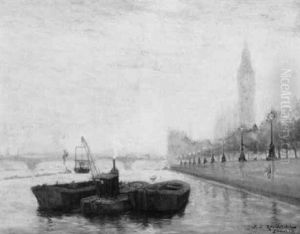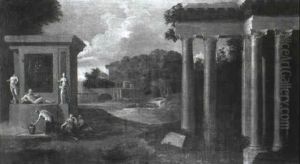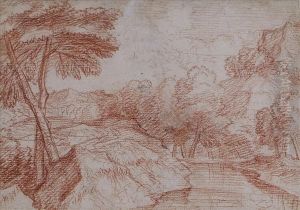Jacques Rousseau Paintings
Jacques Rousseau, not to be confused with the famous philosopher Jean-Jacques Rousseau, was a notable French painter who specialized in landscape and decorative painting during the Baroque period. Born in Paris in 1630, he hailed from a family with artistic inclinations, which helped him to develop an interest in painting from an early age. Despite the commonality in their names, Jacques Rousseau and Jean-Jacques Rousseau were not directly related and belonged to entirely different centuries and professional realms.
Rousseau's career was marked by his exceptional talent in capturing the essence of nature in his landscapes, a skill that garnered him significant attention and praise among the art communities in France and beyond. He was particularly adept at integrating architectural elements with natural landscapes, creating harmonious and idyllic scenes that were sought after by patrons of the arts during his time. His work often depicted serene gardens, grand estates, and mythical landscapes, imbued with a sense of calm and beauty.
In addition to his landscape paintings, Jacques Rousseau was also known for his contributions to the decoration of several prominent buildings in France, including the Château de Versailles and the Château de Saint-Germain-en-Laye. His ability to blend architectural precision with the softness of natural elements made his work highly valuable in the realm of decorative arts.
Despite his success, Rousseau faced challenges in his career, including periods of financial difficulty and professional rivalry. However, his resilience and dedication to his craft allowed him to continue producing works of art that were celebrated for their beauty and technical skill. Jacques Rousseau's legacy as a painter is marked by his significant contributions to the development of landscape painting in the Baroque era, a genre that continued to evolve and flourish long after his death in 1693.


